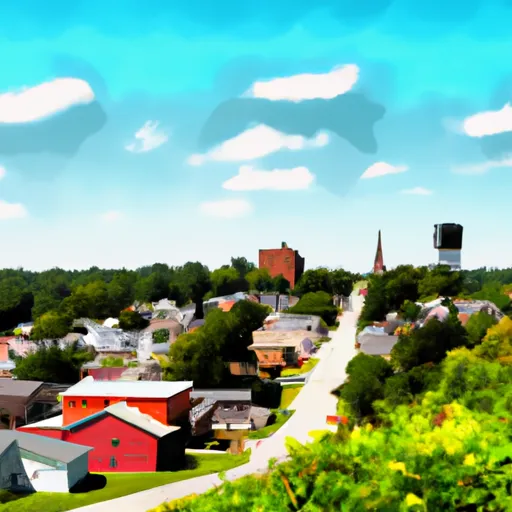-
 Snoflo Premium
Snoflo Premium
Get unlimited access to all our content
With no Ad interruptions! - Start Your Free Trial Login with existing account
Cropper
Eden Index
Climate
8.1
•
Recreation
3.1
•
Community
0.8
•
Safeguard
4.5/10

Cropper, Kentucky is a small rural community located in Shelby County. The climate in Cropper is warm and temperate, with an average temperature of 55°F. The area receives an average of 49 inches of rainfall per year. The hydrology constituents of the area include the Little Kentucky River and several creeks and streams that feed into it. Outdoor recreation opportunities in Cropper include fishing and boating on the river, as well as hiking and camping in nearby parks and forests. The nearby Guist Creek Lake also offers opportunities for boating and fishing. Overall, Cropper is a quiet and peaceful community with plenty of natural beauty to explore.
What is the Eden Index?
The Snoflo Eden Index serves as a comprehensive rating system for regions, evaluating their desirability through a holistic assessment of climate health, outdoor recreation opportunities, and natural disaster risk, acknowledging the profound impact of these factors on livability and well-being.
Climate Health Indicator (CHI): 8.1
Cropper receives approximately
1198mm of rain per year,
with humidity levels near 86%
and air temperatures averaging around
13°C.
Cropper has a plant hardyness factor of
6, meaning
plants and agriculture in this region thrive during a short period during spring and early summer. Most
plants will die off during the colder winter months.
By considering the ideal temperature range, reliable water supplies, clean air, and stable seasonal rain or snowpacks, the Climate Health Indicator (CHI) underscores the significance of a healthy climate as the foundation for quality living.
A healthy climate is paramount for ensuring a high quality of life and livability in a region, fostering both physical well-being and environmental harmony. This can be characterized by ideal temperatures, reliable access to water supplies, clean air, and consistent seasonal rain or snowpacks.
Weather Forecast
Streamflow Conditions
Kentucky
Area Rivers
Kentucky
Snowpack Depths
Kentucky
Reservoir Storage Capacity
Kentucky
Groundwater Levels
Recreational Opportunity Index (ROI): 3.1
The Recreational Opportunity Index (ROI) recognizes the value of outdoor recreational options, such as parks, hiking trails, camping sites, and fishing spots, while acknowledging that climate plays a pivotal role in ensuring the comfort and consistency of these experiences.
Access to outdoor recreational opportunities, encompassing activities such as parks, hiking, camping, and fishing, is crucial for overall well-being, and the climate plays a pivotal role in enabling and enhancing these experiences, ensuring that individuals can engage in nature-based activities comfortably and consistently.
Camping Areas
| Campground | Campsites | Reservations | Toilets | Showers | Elevation |
|---|---|---|---|---|---|
| Guist Creek Lake County Park | None | 792 ft | |||
| Lake Jericho Recreation Area | 62 | 814 ft | |||
| Paul Ogle Riverfront Park | None | 451 ft | |||
| Lake Shelby Campground | 20 | 721 ft | |||
| Taylorsville Lake State Park | 40 | 760 ft | |||
| Boat Ramp - Elmer Davis Lake - DFWR | None | 735 ft | |||
| Obey River - Dale Hollow Lake | 131 | 658 ft | |||
| Versailles State Park | 225 | 965 ft | |||
| General Butler State Park | 110 | 490 ft | |||
| Ryans Camp Ramp - DFWR | None | 754 ft |
Nearby Ski Areas
Catastrophe Safeguard Index (CSI):
The Catastrophe Safeguard Index (CSI) recognizes that natural disaster risk, encompassing floods, fires, hurricanes, and tornadoes, can drastically affect safety and the overall appeal of an area.
The level of natural disaster risk in a region significantly affects safety and the overall livability, with climate change amplifying these risks by potentially increasing the frequency and intensity of events like floods, fires, hurricanes, and tornadoes, thereby posing substantial challenges to community resilience and well-being.
Community Resilience Indicator (CRI): 0.8
The Community Resilience Indicator (CRI) recognizes that education, healthcare, and socioeconomics are crucial to the well-being of a region. The CRI acknowledges the profound impact of these elements on residents' overall quality of life. By evaluating educational resources, healthcare accessibility, and economic inclusivity, the index captures the essential aspects that contribute to a thriving community, fostering resident satisfaction, equity, and social cohesion.

